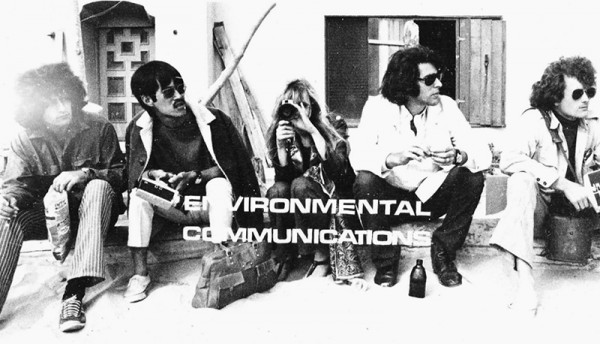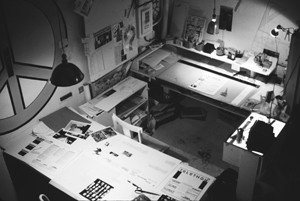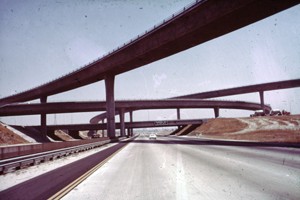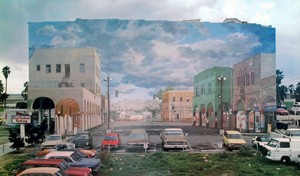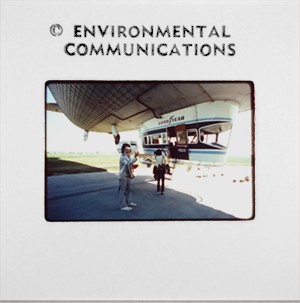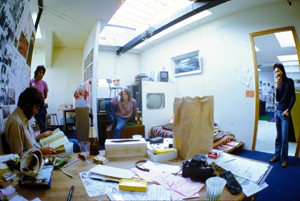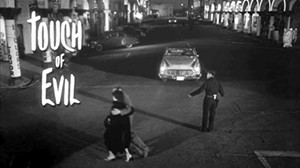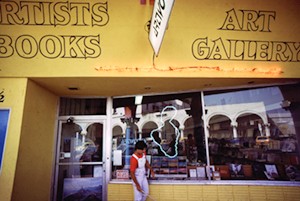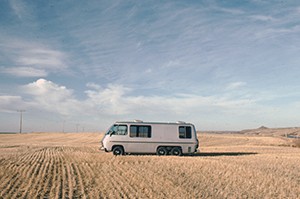The Integrated Approach of Environmental Communications and Learning from Los Angeles
David Greenbergco-founder, Environmental Communicationsedited by Elizabeth Freeman
It started in early summer 1969. After graduating with an architecture degree from Arizona State University I returned to Los Angeles where I had been brought up on Kings Road in West Hollywood next to the home and studio of the great Austrian/California Architect R.M Schindler.
EC rented a large studio space in the heart of Venice for $50 a month. It began as a multi-disciplinary, multi-media group. Our founding group included Architectural History Professor, Douglas White; Architectural graduate Ted Tanaka (Ted later became the architect of the colorful light columns at LAX), artist/photographer Roger Webster; Urban Planning/Design Professor Michael Kwartler. One professor helping with the past and another with the present and the future. Though our perspective was always very wide angle and a bit out of focus, we began to look at Los Angeles Architecture with a big “A” which for us included the environment around the architecture.
Our methods were somewhat simple. L.A. had become "the integrated city" so the trick was just getting to really see it. One advantage for me was that I had gone away from LA to college in the Arizona desert for 8 years so upon my return I saw it freshly with new eyes, questioning everything without being critical. The "not critical" viewpoint came from me pretending I was like a man from Mars looking at everything for the first time… kind of like the hero in Stranger in a Strange Land. We were all strangers in a strange land. It was very helpful to see so many things without judgment. Not just good or bad but OK...this is just the truth of the thing.
Perhaps the best way to see the truth of the thing was through the lens of a 35mm Nikon camera which was a popular tool of the day. We almost created a new kind of environmental photography which was quite inclusive, showing the context of things. That was what we were all about. We examined the images with combined-eyes, both academic and artistic seeing everything in context. This became the basis for our integrated approach to understanding the "integrated" environment.
Our earliest studies were of the pioneer architects of Southern California: Schindler, Neutra, Wright, Gill, Maybeck, the Greene Bros. and the L.A. Environment itself. We made slide studies with booklets for use in architectural history classes at university libraries. Soon we branched out to studying everything that was popping up around L.A. From the incredible murals of the L.A. Fine Arts Squad to the murals and graffiti in the Barrios of East L.A. to the vibrant hand painted billboards on the Sunset Strip. Our attention went to the customized cars both on the strip and in East L.A. as well as time lapse studies of traffic on Freeways and interchanges with sophisticated video equipment.
We took our cameras everywhere and pointed them at everything, following their viewpoint, their truth in what they captured. We tried to look at things as objectively as possible in an environment that had been looked at for so long in a rather subjective manner as well as negatively from NYC to London. Sometimes we needed super8 or 16mm film or video with time lapse to understand what it was we were really looking at. We would constantly change our perspective views shooting from tall buildings, all day rides in the slow moving Goodyear Blimp, or driving around in a convertible or or the whole country in our GMC mediamotorhome.
The 60's created a mandate for change and L.A. was ready for it. It was the only truly major 20th century American city. At the 1972 Aspen Design conference entitled Making the City Visible, Louis Kahn declared “L.A. is truth whether you like it or not.” An EC multi-media show shared his stage with our vision of LA.'s truth.
We didn't even have a name for who we were. Though we “professionally” documented art and architecture we also created art shows and installations for museums. In the fall of 1972 EC was invited by Ettore Sottsass to be part of the Milan Triennale showing our environmental videos in black and white. In 1977, Environmental Communications Looks at Los Angeles was an installation at the Los Angeles County Museum of Art featuring slides and videos of the L.A. Environment. The show traveled to the Smithsonian's Cooper Hewitt Museum in New York and through Eastern Europe and Russia though the USIA.
Besides the 1977 Environmental Communications Looks at Los Angeles exhibition, EC also created:
- Art films for Zubin Mehta to be shown at the Hollywood Bowl along with contemporary classical music on the remodeled “columns” designed by Frank Gehry with Lloyd Wright's design behind.
- A concept for a TV series with Marchall McLuhan called Ecoland for PBS based on his last book City As Classroom.
- A media environment with Buckminster Fuller for his dome at Habitat for Humanity in Vancouver 1976.
- A documentary on the technology and the integrated approach used by the Deep Space Network Command Center at Cal Tech and NASA's JPL where we took the first photo of Phobos at a critical moment of the Mariner 9 Mars project.
- Several books including Big Art, Megamurals and Supergraphics and Musical Houses both with Running Press, Philadelphia
We were often asked to consult on projects, books, Hollywood productions. We were the architectural and environmental consultants for Ridley Scott the director of Blade Runner. My graduate work was in Urban Design at UCLA and in 1972 I was asked by Dean Perloff to consult with Charles Jencks on his ideas which later became the book The Language of Post Modern Architecture, a volume very much influenced by EC's research into the the integrated Los Angeles. General Motors bought our slide series Nomadic Truckitecture when they came to us for a consultation.
Perhaps as important as our "integrated" approach was the EC Studio itself. It was located on Windward Avenue one half block from the beach in the middle of the most exciting location in Los Angeles: Venice, California during the entire 70's. The best part of Venice at the time was it was all new in a very old environment eerily, literally right out of the main street in Orson Welles' 1958 movie, Touch of Evil, made only 11 years before we moved in. It was used constantly during the years we were there in film and T.V. locations.
The integrated work/play/live/learn environment at EC was unique, experimental and without rules for the most part. The EC Studio felt more like a clubhouse than a factory or an office. We were a family. We were all married to each other and to EC. We all spent a lot of time with each other, day and night. During the days we were out shooting and at night often hanging around the studio playing with the images and equipment. We had a lot of friends from all over town including artists, architects, designers, writers, actors, musicians, directors, producers who came to hang out with us at night mainly because we were having so much fun just looking and playing with L.A. It was an open atmosphere…so integrated you didn't know or care who the people were. It was the time of having fun in unique environments.
I guess Venice was more about the joy of creativity then anything else. On the same street and within a few blocks around were the most productive artists, architects, musicians and film makers as well as people all over the place inventing the latest California toys (surfboards, skateboards, roller skates), fashions and fads.
We had weekly video nights, an art gallery and bookstore. The EC group was fun, the work was fun, the friends were fun, the environment was fun…filled with the latest media tools and toys as well as topped with the "Greenhouse" (Instant Maui on our roof!). I also went to Maui about 5 times a year just for the fun of it and get to Nature and paradise so I never overdosed too much on L.A. Many EC people went often as well. It's funny when I think about how much the beauty of pure undeveloped nature on Maui contributed to our appreciation of L.A. Just another example of our integrated approach.
Eventually, EC looked beyond L.A. With our new 23' GMC motor home customized by Gary Greenberg into the ultimate media/cool living van we traveled the whole country documenting art, architecture and environment from our unique integrated perspective.
When asked about the Space Program Marshall McLuhan recalled that the first astronaut, when looking back at earth, exclaimed, "Oh my god, it's a work of Art" referring to Planet Earth. What is true, I believe, is that it is now time for the world to see the Earth as a whole, as a work of art and as an Ecology that can only be understood and be sustained through an INTEGRATED APPROACH.
Press and Writing
Reviews, publicity, about EC by EC and personal by David Greenberg and others.
